University of Minnesota Extension research shows that the most successful farm businesses are run by operators who keep up with farm management education, work together on record-keeping, and keep an eye to the future in their marketing.
Extension offers courses on all of the above, and on all of the sciences farmers use on a daily basis in raising crops and animals. Visit Extension’s website (extension.umn.edu/courses-and-events) to find out what’s going on in your region and online.
There is something for everyone on the farm in Extension, including 4-H activities for youth in agriculture, programming for emerging and immigrant farmers, and for women who want to grow their network and business knowledge.
1. Rethink biosecurity for poultry
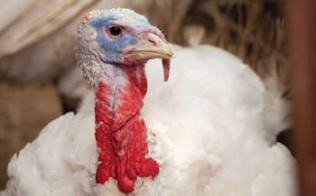
“I need to fix a fan, but the tools are in the other barn. I’ll just run over there quickly and bring them back.”
Did you know that the seemingly harmless task above can let poultry disease sneak into a barn if protocols are not followed? Abby Schuft, Extension poultry educator, helps farmers and their employees stick with the program — the National Poultry Improvement Program (NPIP), to reduce the impact of all poultry diseases.
The Minnesota Board of Animal Health oversees NPIP biosecurity plan audits in the state, which address chickens raised for meat, egg layers, turkeys and upland game birds. They were developed after the costly 2015 outbreak of highly pathogenic avian influenza (HPAI). Dr. Dale Lauer, board assistant director and veterinarian, asked Schuft to provide outreach and education about the new plans and national minimum biosecurity protocols for poultry producers, which are required in order to be eligible for any future HPAI indemnity payments. “The plans contain 14 guiding principles,” Schuft says, “Poultry researchers at the University would like the industry to adopt even higher standards in the years ahead.”
2. Make a livestock emergency contingency plan
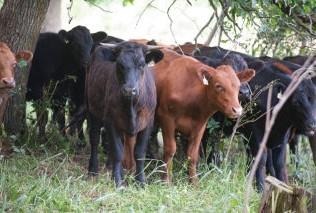
Being prepared for extended illness took on a new urgency last year as the COVID-19 pandemic grew. Livestock farms are especially vulnerable because of the daily chores required to run them.
Eric Mousel, University of Minnesota Extension cow-calf educator, imagined what would happen on his own beef operation in Itasca County. His father-in-law is vital to the day-to-day work on the ranch. What if he couldn’t work?
“With many livestock operations, much of the knowledge of running the farm lives in the mind of the primary operator,” says Mousel. He realized that a written plan would help another family member, neighbor or friend lend a hand.
Extension educators developed Livestock Contingency Plan templates for beef cattle, dairy, horses, sheep, goats, swine and even honeybees (bees are considered livestock when used for pollinating crops).
“The template provides for an owner’s manual, checklist and Rolodex all in one,” says Mousel. The plans are designed to be shared with those who might be able to assist in an emergency.
The contingency plan templates are part of Extension’s wealth of online information on preparing for livestock emergencies.
3. Keep weed seeds out of soybean shipments
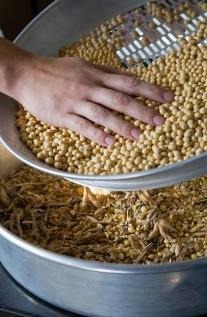
In 2018, Chinese officials began rejecting shipments of soybeans from the U.S. that contain more than one percent foreign material and contain weed seeds on China’s prohibited species list.
Soybean exports to China are increasing again as trade disputes ramp down. More volume will likely lead to more inspections.
“Foreign material, including weed seed, corn and wheat found in shipments could cause significant hardship for exporters, who will become stricter with suppliers moving forward,” says Seth Naeve, Extension soybean specialist. “Local elevators will also need to respond. Northern soybean farmers should be made aware of potential direct and indirect consequences of delivering non-compliant soybeans.”
Reduced foreign material and weed seed in grain will help growers compete in the global market, supporting pricing.
“Managing herbicide-resistant weeds also enables farmers with their own first step in weed management, which is preventing weed seeds from entering their crop soil,” adds Debalin Sarangi, Extension weed scientist.
Farmers can watch a new video series produced by Naeve, Sarangi, and Extension Educator David Nicolai.
4. Ask for business help and advice
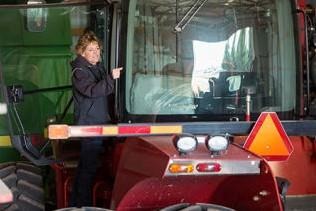
Farmers in the 21st century have to be savvy about everything from technology to crop and animal science to public relations. Those who don’t farm may forget that farms are also businesses and require the same degree of attention to matters of finance and marketing.
Add to that the situations that seem to arise more years than not: droughts, storms, diseases and global trade disruptions, and more.
Recovery resources available through government programs can become missed opportunities when they aren’t understood and acted upon by deadlines.
Extension’s agricultural business management team stays up to date on all of these programs and writes a blog that can help farmers make their own decisions about participating in farm bill initiatives, selecting crop insurance plans, drafting cropland rental agreements and responding to emergency situations. Read Extension’s Agricultural Business Management blog.
Farmers sometimes need to talk to someone directly. Extension farm financial experts from areas like banking and farm business management education provide free, one-on-one financial counseling to those experiencing financial stress. The Farm Information Line is the place to start. Call 1-800-232-9077.
5. Invest in clean energy
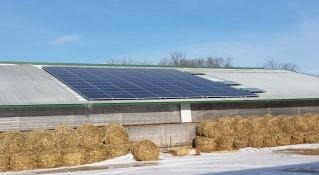
Farms have unique opportunities to save energy and invest in renewable energy resources like solar, wind and biomass. Clean energy can help agricultural producers’ bottom line.
“Clean energy is cost-effective, and you can do good by the environment, as well,” says Fritz Ebinger, Clean Energy Resource Teams (CERTs) rural energy development program manager for Extension’s Regional Sustainable Development Partnerships. “Energy conservation and efficiency save farmers money, while owning or hosting solar, for example, can add revenue.”
Working across Minnesota, CERTs is here to help farmers understand their options, find out what’s working for others and move forward with clean energy. CERTs provides farmers with unbiased resources, tools, guidance, connections, funding and financing opportunities, events, and examples to get projects done.
“Farmers are long-term forward thinkers. They understand how technology works, and they are stewards of the land. Energy efficiency and solar are examples of how you can be both a steward financially and environmentally,” says Ebinger.
Source : umn.edu